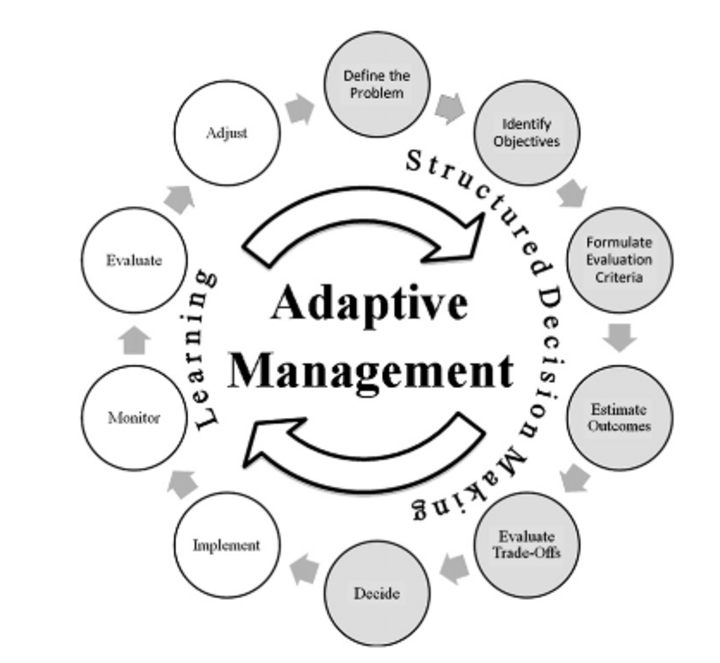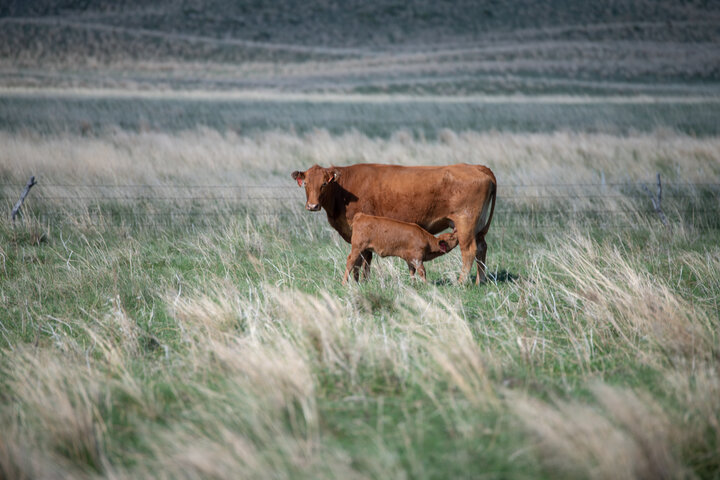Today’s farms and ranches require decisions to be made throughout periods of elevated risk and uncertainty. Managing operational efficiency, grass banking, and destocking herds are all commonly used to stabilize returns during drought conditions and market extremes.
However, the compounding effects of extreme weather, market volatility, and rising input costs have re-focused attention on management alternatives that offer a broader set of resources to use when developing or implementing grazing management plans.
One tactic that is gaining notoriety is known as adaptive management. Adaptive management (AM) is often described as ‘learning-by-doing’ decision making, but it is a structured process that helps inform decisions over time. The goal of AM is to understand, implement, monitor, and adjust strategies as needed to address uncertainties in land or natural resource management (e.g., growing season precipitation).

How Does Adaptive Management Apply to My Operation?
AM should be thought of as a process, not a single strategy or approach. Challenges are identified in an iterative cycle of structured decision-making and learning, forward-looking practices are implemented, and outcomes are monitored and evaluated to inform future management decisions.
For Nebraska ranchers, one of the benefits of AM comes in the form of feedback. When new grazing strategies or modifications are carried out, monitoring provides specific information on the outcomes of those decisions. As the application of AM has increased, new online tools have become available that bolsters data collected through field monitoring (see resources below).
A Testing Ground for AM: Barta Brothers Ranch
In 2020, the University of Nebraska’s Barta Brothers Ranch launched a collaborative AM project to address key uncertainties related to grassland management in the Sandhills. This project focuses on evaluating stakeholder-designed management plans in a collaborative research setting. This ensures that management experiments reflect real-world conditions of the Sandhills and the surrounding north-central Great Plains. This collaboration builds on learning-by-doing through the active involvement of ranchers and rangeland managers—integrating their experience directly into experiments at Barta Brothers Ranch.
Making Management Decisions
The Barta Brothers Ranch stakeholder group encompasses ranchers, range management professionals, natural resource managers, and University of Nebraska researchers. Following AM principles, the first step for the group was to find a shared definition of the management problems that exist in the Sandhills region. The stakeholder group identified the following as core issues in grassland management:
- Woody encroachment/invasive species
- Heterogeneity/diversity
- Economic and ecological trade-offs
- Multifunctionality
- Multi-species grazing
- Climate change
The structured decision-making process guided stakeholders to the first management action: a multi-year burn/grazing regimen. The objectives of this project are to then assess how prescribed fire can control eastern redcedar; how burned rangelands respond to grazing or no-grazing; and how cattle performance is influenced by prescribed fire.
Completing the Cycle: Monitor, Evaluate, Adjust
The next phase in the AM cycle will be to reconvene stakeholders to discuss outcomes, evaluate the management tradeoffs, and decide what/if any adjustments should be implemented to address the core management problems. The continuous cycle of implementation, monitoring, evaluation, and adjustment are what make AM a promising tool to help push the boundary of uncertainty a bit further away from home for ranchers in Nebraska.
For more information about rangeland monitoring resources, please review the following websites:
https://droughtmonitor.unl.edu/ConditionsOutlooks/Outlooks.aspx
https://grasscast.unl.edu/
https://rangelands.app/production-explorer/
Interviews with the authors of BeefWatch newsletter articles become available throughout the month of publication and are accessible at https://go.unl.edu/podcast.
Topics covered:
Forages, Grazing systems & best practices, Pasture & range, Pasture & range

